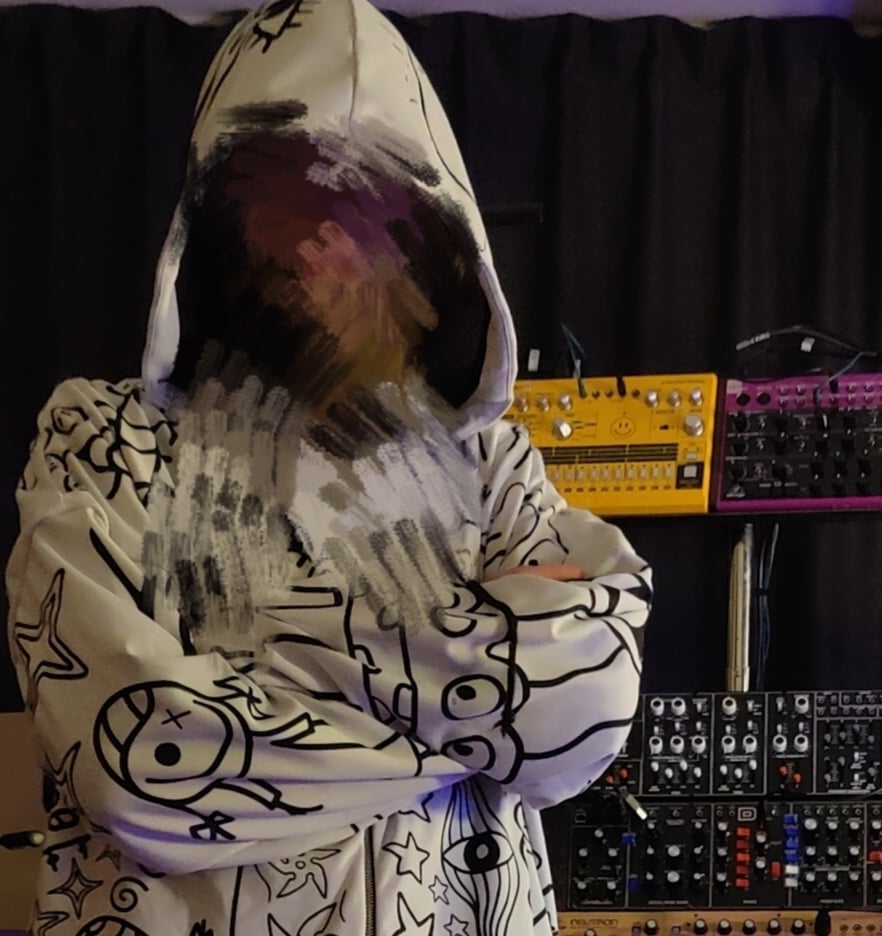Question: If you have tried a dodgy dual input hotend, what were your experiences?
Background: As with anyone else who have a single extruder, I’ve been contemplating upgrading to something with a bit more flexibility. But the idea of getting a whole new printer doesn’t appeal as much to my wallet, as it does to my mind :-)
Scouring aliexpress for weird filaments with the mrs - you know, normal Saturday-evening-and-the-kids-are-sleeping couple activities - we fell upon a dual input hotend for creality cr10. It looks an awful lot like the hotend we have, and it comes with either 24v or 12v heater. It’s only about 15€ so I might just give it a try, but it’s pretty stupid when I don’t even have a plan for an extra extruder as well. And I don’t know how I would go about wiring that part up on my cr6 at the moment.
some info
Generally, clogs are the primary issue that prevents multi material in any such automatic filament changing system.
The secondary issue is that even when restricting the system to multi color, every color will have issues with dialing in the amount of purge needed to clear the chamber of the melt zone. If you can develop a mental picture if the melt zone, the tube between the heatsink and the heat block is ~1.8mm diameter, and so is the nozzle. The nozzle has a tip orifice that is 0.1mm-1mm diameter. The taper between the tube and the tip orifice is just whatever angle drill bit was used in the CNC lathe operation. Inside it is just a hollow simple cone shape. There are two potential places in the melt zone where residual filament can be trapped. There is the angular transition between the hollow cylinder to the hollow cone inside the nozzle. Then there is the groove from a relief chamfer added to both surfaces where the nozzle tightens to the tube.
Thirdly, all PID temperature control algorithms require time to stabilize. When you make changes to the melt zone there will be considerable over and undershoot that follow.
Fourthly, you never know how much of the melt is going to pull out when each full retraction is made. So you need to purge a lot to ensure you can account for the melt zone.
All of this creates inconsistencies that are more problematic than they are worth for most people by my observations. I haven’t tried them myself. I’ve done a lot of research into IDEX because my inner amateur engineer sends up major red flags when I think about multi filament setups.
Just to get ahead of it, with IDEX the issue is that cheap 3D printers are not at all accurate, they are very precise. Precision is the only thing that matters when you are printing with the one print head. In other words (0, 0) on your print bed is never an absolute location it varies. It seems like it is the same, but in terms of true accuracy, it is not. You never experience this unless you try to restart a print manually. The issue is hard to solve and requires much more expensive closed loop linear actuator systems to solve well. Even with this, the major challenge is calibrating the nozzle height of both print heads and their squish properties.
You might notice that with multicolor prints, most of the examples you see are either the occasional manual swap someone like myself does, or people with a business or print farm that are motivated to dial in exactly what is needed for a specific combination of filaments with a single print. I try not to pay attention to anything pros like this print in examples. When I start seeing average functional prints that include multi materials in more casual designs, then I start considering the tech viable in practice. From what I have seen, most hobby 3d prints using multi materials are not of the practical variety. I would be making parts that incorporate TPU/TPE grips and hinges into my designs. I could print something like an audio driver that incorporates the cone and spider in one print. I need to see stuff like this, from people with no vested interest, that are not just showing off what is possible or shilling some printer. I don’t take them seriously otherwise. As far as I’m concerned, all multi color setups are only for print farms, and multi material is not at all relevant to me and my use case. IDEX is the engineered solution, but I’m not at a true hardware developer skill level and open source doesn’t have very good support for slicing and calibrating IDEX. Eddie the Engineer was messing with this on the Voron team with a Trident for awhile, but I lost track and am not up to date on the project.
I have zero experience with this, but just thinking logistically, it doesn’t seem like something that will work. Wiring it up is one thing, but it’s another thing entirely to add the control commands to the slicer.
I suppose you could manually pause the print, retract filament 1, swap the control cable (or wire it to a switch) to Extruder 2, and resume the print. Essentially it saves half a step in swapping filaments mid-print, but it would still be printing a single color per layer.
https://youtu.be/-weYzZqiQ4Y Judging by the extrusion head on the current world record holder 3D printer, it will probably work.
That dude has mad skills and all the experience. He also spent so much time designing and making that hotend. Just because it works for him, doesn’t mean the principle is sound or that it could just work for anybody. I’ve been following him on YouTube for quite some time and am insanely jealous of his workspace and skill level. If anything his videos have shown me it’s super hard to get multi input extruders to work.
Good point. Cant believe that printing footage wasn’t sped up. INSANE speed. :)
No experience with these but I have seen some.
Basically you have 2 extruders and push the filament based on what’s needed.
You do need to purge the melt zone and I these don’t work well with different materials (PLA in one, ABS the other) because of PLA being too hot at ABS melt temps, etc.
As for these knockoffs if it’s cheap enough maybe but I can’t imagine the heat break being too good and it seems prone to jams.
Used to have one. It was constantly clogged and causing trouble.
If you like to tinker but don’t want (and don’t have the time) to build something like the ERCF or Tradrack, I would suggest looking at the 3MS. It is a DIY solution consisting of a stepper and extruder per filament (you can re-use an old mk8 extruder if you have one) and a splitter.
Had to work with two Creality CR-5S printers, which had those. Every time I tried doing a multicolor print, it would work(ish), but would then proceed to clog itself to high heavens. I’d need to take everything apart.
Avoid. There’s a good reason BambuLabs has one of the only somewhat working multicolor system on the market. Just buy an A1 and toss the CR10 in the trash unless you’re doing this as a learning exercise and you like putting yourself through hell figuring out issues with your machine. I do happen to like doing that, and I still wouldn’t do a system like this.
BambuLabs has one of the only somewhat working multicolor system
Welcome to 2025, Bambu has competition now
Anycubic Kobra combo (built in filament dryer too) Creality K2 Plus combo (2.5x the build area of biggest Bambu, faster)
Then there are DIY MMUS like ERCF, 3DChameleon, etc.
The problem is that it’s not good enough to be 99.9% reliable, when it takes 4500 color switches. I wouldn’t trust Anycubic with ANYTHING; I repair machines for a living and they are the WORST when it comes to filament machines, and somehow really great when it comes to resin machines.
The K2 Plus combo hasn’t proven itself yet. And like you said, welcome to 2025: most people don’t DIY their machines any more.
I don’t even own a Bambu (I own a VZ330 and a Voron 2.4 310); but I have hands on familiarity with every machine on the market - I’ve been doing this for 12 years. I’ve set up every multicolor system under the sun, including palette 3 pro and ERCF – and the fact of the matter is: The only one that stays 99.999% reliable is the AMS.
Yes, things are getting way better - for sure. I’m really hoping the K2 Plus “CMS” stands the test of time. I really like that its got a larger option and comes with the 4-way “hub” by default.
But, even with Creality pulling out the stops on that thing – Bambu labs engineers came from DJI drones; they hit the market with fresh eyes, and they still have more protections in place than their competitors. That makes them the easiest to use for people who don’t like to learn stuff, or manage/repair their machines.
Not anymore. Creality K2 plus has multicolor, works great.
And the Qidi I-Fast, and the Prusa XL.
and the Anycubic Kobra combo, only one I know of with a heated filament dryer inside the MMU
Prusa XL has multiple print heads which is even better
Sure, only gotta cough up $5k! LOL - Only a whole ORDER of magnitude more expensive! That’s all!
I can’t find the qidi for sale in a Danish store, but the prusa xl is 3x the price of the creality K2 plus. Hardly a fair comparison.
The prusa is 10X the machine the Creality is. It’s a buy once, cry once purchase.
I love jo, and wish him the best, but sorry - they aren’t 10x the machine the Creality is any longer. They’ve fallen so far and Creality has really upped their game as of late.
Buy a current-gen. hotend and use a y-splitter in the filament path.
Those hotends do the same but work less reliable. Getting the filament change right/reliable requires some slicer setting tuning.
I think they’re awesome







